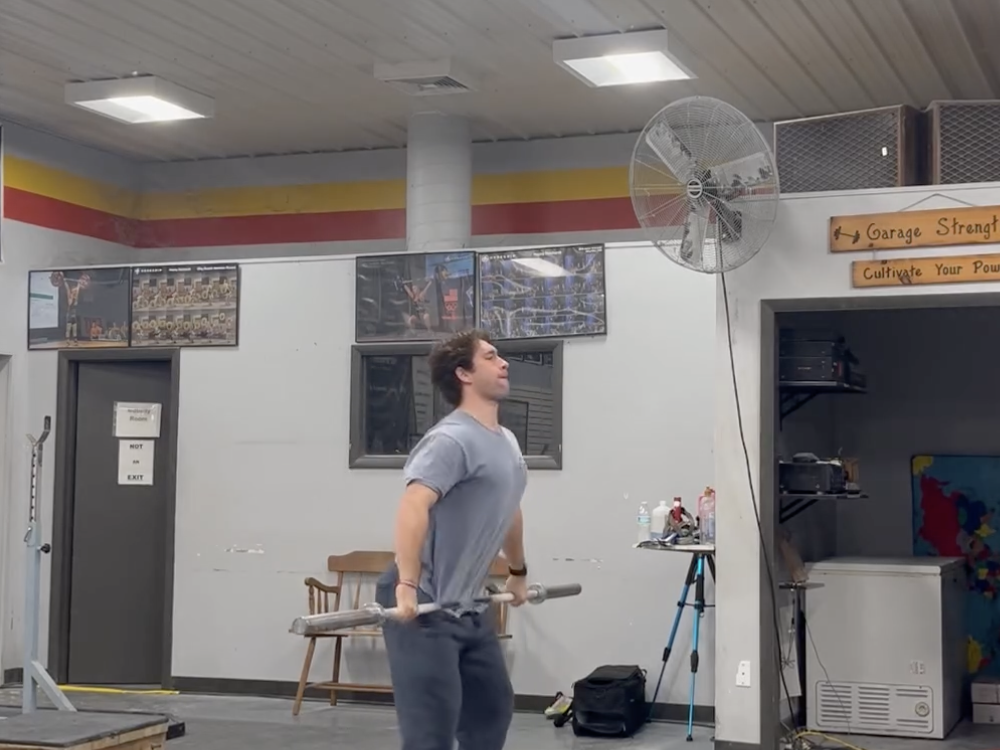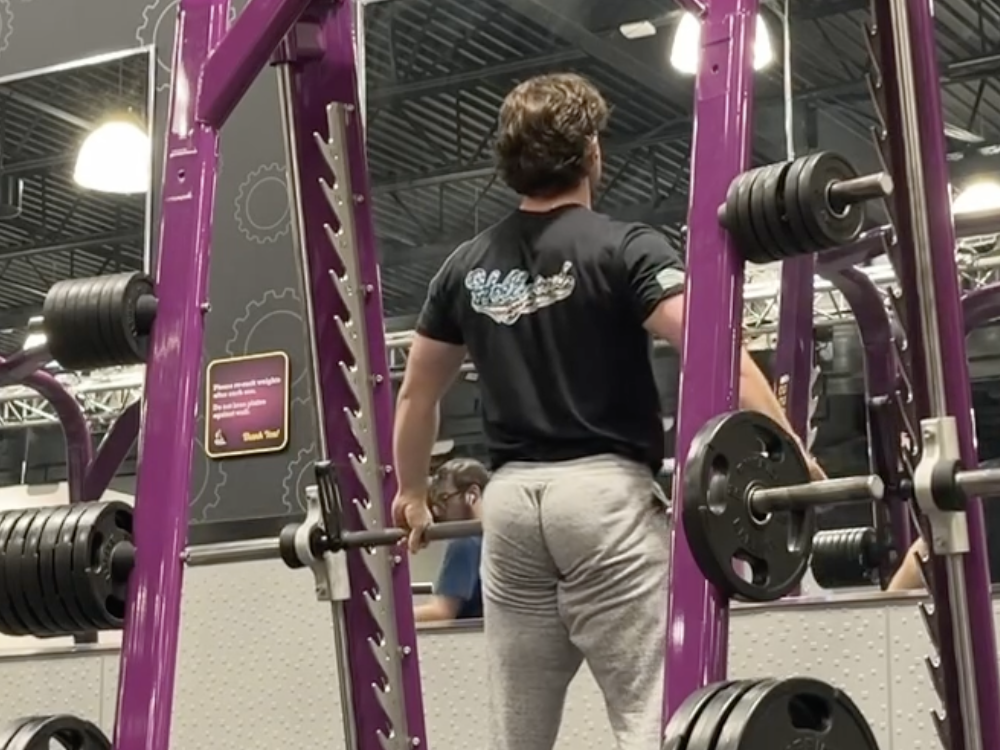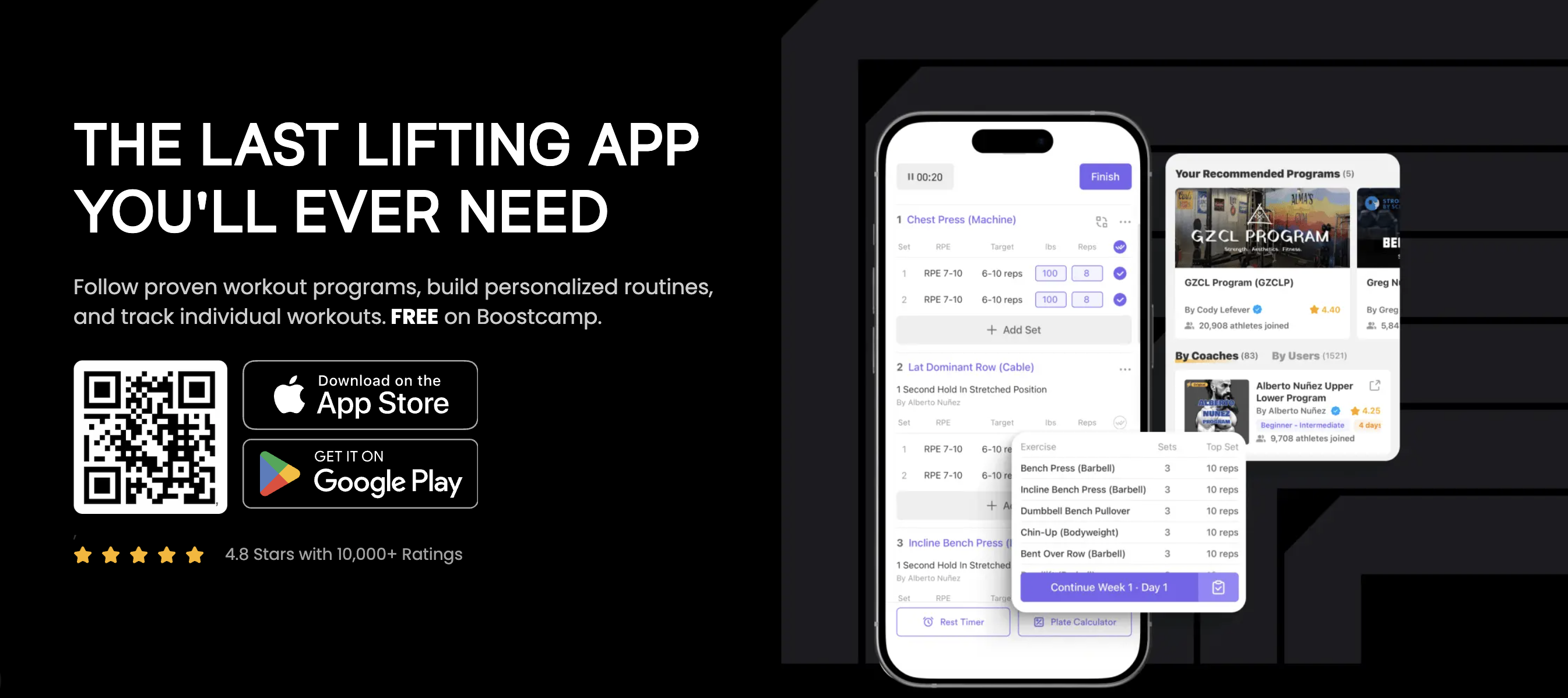How to Recover Muscles After Workouts for Maximum Gains
Written by the Boostcamp staff
Don't let your workouts go to waste
Sure lifting is fun, hitting new PRs and all is great, but too many times do people overlook a largely important part of a well regimented fitness routine, and that is muscle recovery. What people do not realize is that muscle recovery is key for peak performance and injury prevention, allowing the body to heal and adapt to the brutal workouts that you have put them through, whether you are training for powerlifting or bodybuilding. Overtraining and short recovery times can cause injuries. This is counterintuitive for anyone at any fitness level. Recovery is for everyone, from pro athletes to casual exercisers, and everyone should apply it.
Our team at Boostcamp will be diving into the recovery process, so let's take a look.
Understanding the Recovery Process

Physical exercise tears our skeletal muscles. This stresses them and triggers rebuilding, which is a process called called muscle hypertrophy. During hypertrophy, muscles will grow through a process where muscle protein synthesis (MPS) must exceed the rate of muscle protein breakdown (MPB).
Inflammation is normal in muscle recovery. Inflammation helps direct blood flow to torn muscle fibers, bringing oxygen and nutrients. Prolonged inflammation can slow recovery. If pain and swelling persist after three days, see a doctor.
Adequate rest and sleep are crucial for recovery. They let the body perform its processes without becoming overloaded. During sleep, growth hormone secretion is elevated, which supports muscle repair and protein synthesis. Optimal muscle recovery means that good sleep quality and duration should fall between 7 and 9 hours per night.
Nutrition for Optimal Recovery
One of the most prominent parts of recovery is the dietary process. Protein is often associated with muscles as it is one of the most important macronutrients for muscle recovery. Dietary proteins assist with MPS to achieve hypertrophy. You should implement high-quality protein with essential amino acids and high leucine in your diet for optimal results. Examples include:
Lean meats
Fish
Eggs
Plant-based protein
The optimal protein intake for muscle recovery is approximately 1.2-2.0 grams per kilogram of body weight per day (depending on training intensity). To maximize benefits even further, 20-40 grams of protein should be consumed as a post workout snack for maximal muscle repair.
Carbohydrates replenish glycogen stores that are used during exercise/training. Glycogen is known as the primary energy source for anaerobic and aerobic (oxygenated blood) training. This is a complex cycle, however in broader terms, carbs act as the fuel to give the body power to complete workouts. Post workout, carbs should also be added into the snack so it can restore energy for the body to complete its muscle recovery process.
Hydration is important for muscle function. If your body is dehydrated, then electrolytes can’t reach muscles and performance is impaired. This can also lead to prolonged recovery times and even severe adverse reactions. Dehydration can be identified by involuntary muscle cramps and reduced movements, and requires quick intervention.
Micronutrients such as vitamins and minerals can play a significant role in recovery. Vitamin C and E provide antioxidant properties while zinc and magnesium are critical in muscle function. A well-balanced diet is important. It provides enough micronutrients for recovery. A well-balanced diet would include fruits, vegetables and whole grains in addition to the proteins.
Supplements to Support Recovery
Supplements to aid hypertrophy and recovery are controversial. Always research them and consult a doctor. The supplements are for reference only, not to be taken as medical advice.
The use of creatine is popular for improving performance and muscle recovery. Creatine helps replenish adenosine triphosphate (ATP), which produces muscle contractions. Some studies support that it increases strength, boosts high-intensity exercise, and speeds muscle recovery. Due to the numerous forms of creatine on the market, however, it is impossible to categorize the benefits since companies formulate creatine differently. It is best to research specifically the brand of creatine intended to be used and consult with a medical provider or registered dietician before taking this supplement.
Protein powder is a supplement that offers a convenient way of supporting muscle recovery that is readily accessible to most. Protein powder is rapidly absorbed, which is ideal for a post workout supplement, and can be easily made on the go. Again, however the same benefits are hard to categorize with different variations available on the market, and due diligence should be done to research the best protein powder for you.
Branched-chain amino acids (BCAAs) are essential amino acids that help to reduce muscle soreness and expedite muscle recovery. BCAAs are usually grouped in with other supplements or can be added to food or drinks. BCAAs also require due diligence in researching the best option for you as well as making sure you are already using a supplement that it’s not already included as they are typically included in many pre-formulated protein powders, energy supplements, or recovery drinks.
Active Recovery Techniques
Active recovery involves moving your body in lower intensity activities such as yoga, or cardio exercises like walking, or swimming. Active recovery is not meant to be a high-intensity workout, but rather to increase blood flow to muscles and deliver oxygen and nutrients. Active recovery also reduces muscle soreness and can increase recovery time as opposed to just resting. This happens by clearing metabolic waste, such as lactic acid, that build up during exercise.
Passive Recovery Techniques
Passive recovery includes non-exercise methods that can reduce soreness and aid in muscle tissue repair. These techniques include massage, foam rolling, ice baths, vaso pneumatic compression, and electrical stimulation. In the performance recovery world, compression boots are popular. They stimulate blood flow to the legs to speed up healing.
Another technique is massage or foam rolling. They boost blood flow to the tissues and release tight muscles. This helps recovery. Electrical stimulation or neuromodulation can create non-fatiguing muscle contractions. This increases blood flow to the tissue and aids recovery.
Lastly, cold-water immersion or contrast baths (hot and cold) reduce inflammation and soreness. They also improve blood circulation. All passive recovery techniques have one goal. That is to optimize blood flow to the injured tissues. This will speed up healing.
Creating a Recovery Routine
Creating a personalized recovery routine is tricky. Not everything can or should be done. It's best to have a healthy balance in the four categories discussed. These categories include rest and sleep, nutrition, active recovery, and passive recovery. Your recovery routine should match your lifestyle and training. It should not overwhelm you.
An example of a foundational recovery routine should include the following:
1. Rest and Sleep: Aim for 7-9 hours of sleep each night for optimal muscle repair.
2. Nutrition: Eat a balanced diet. After workouts (within 30 minutes) protein and carbs should be consumed as well as rehydrating. Supplements are optional.
3. Active Recovery Routine: a low-intensity activity such as yoga or walking on a treadmill for 30 minutes during the recovery period (1-2 days post workout)
4. Passive Recovery Routine: A mix of foam rolling, massage, or other methods you have. Recovery centers are becoming a popular option that could benefit you if you have access to one.
Finding Workouts

While recovery is crucial, having a good workout program to follow is just as important and Boostcamp is the place to find one. Boostcamp allows you to choose from over 50 FREE workout programs that are written by some renowned coaches and consist of strength, hypertrophy, or functional fitness, or both, from the push pull legs program all the way to upper lower, there are so many programs to choose from that can help fit your needs.
However, with Boostcamp, you don’t have to just follow a pre-written program (although each program is written by a professional), you also can create your own program as well, and track your progress to make sure you are on the right track. That being said, when you are looking to incorporate some serious training to further your progress on your squat by bodyweight, then check out Boostcamp.
Wrap up
Prioritizing muscle recovery has many benefits. It makes you feel good. It also helps you achieve your best results. The body is a complex system. However, by grasping basic physiology, you can use a science-backed routine. It will benefit your muscles greatly. Anyone can optimize muscle recovery, no matter their fitness level. It will help them progress and avoid injuries to reach their goals.
Be sure to check out some of the strength training programs and follow Boostcamp on Instagram and subscribe on YouTube!

